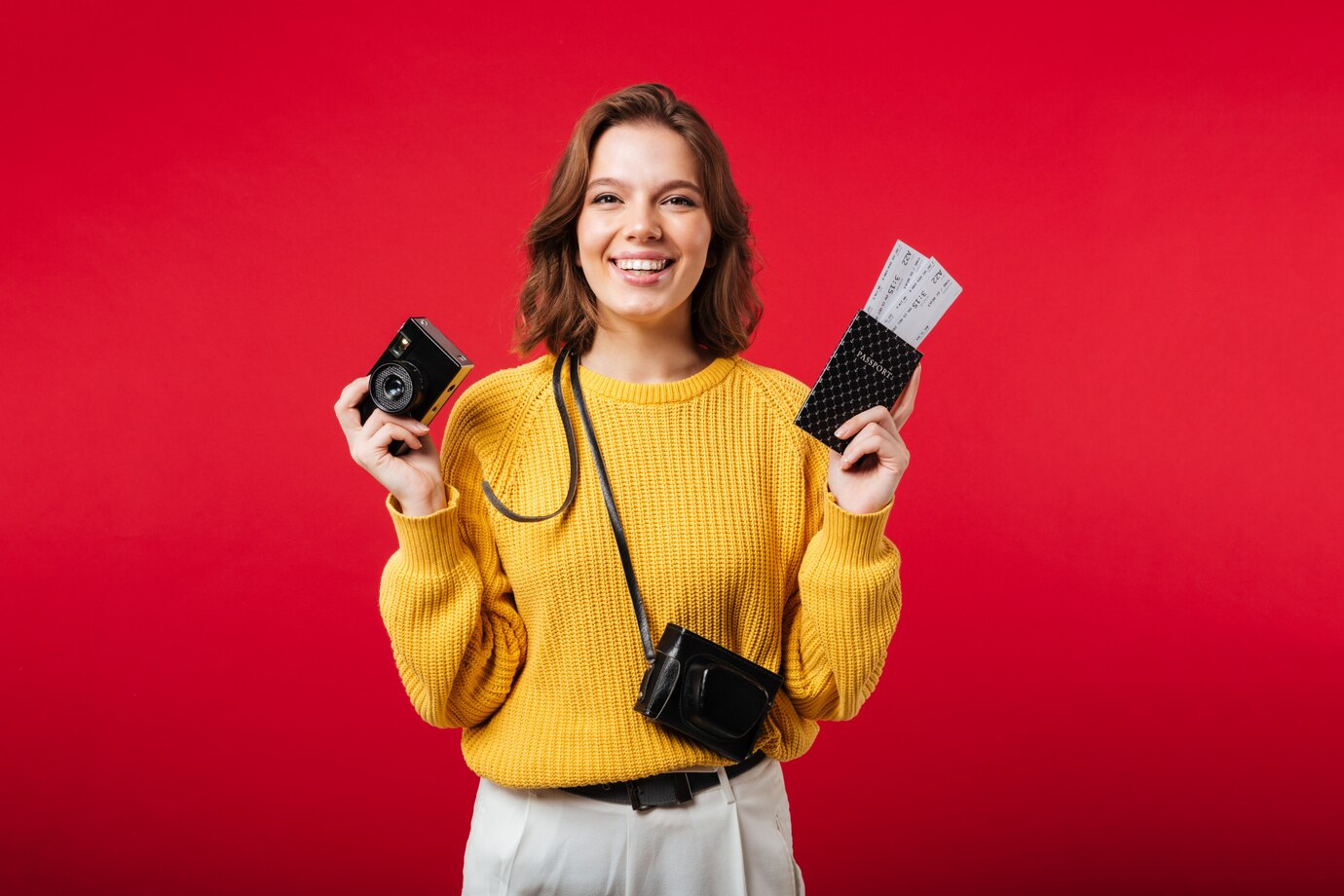Forget the days of stiff smiles and awkward studio backdrops – passport and visa photo trends in 2023 are all about embracing individuality and authenticity. Gone are the rigid regulations of yesteryear, replaced by a wave of self-expression, technological advancements, and even a touch of environmental consciousness. Whether rocking bold accessories, opting for natural lighting, or utilizing smartphone apps that enhance inclusivity, travelers are increasingly demanding photo options that reflect their unique personalities and values. From gender-neutral attire to embracing cultural headwear, the traditional passport photo is undergoing a metamorphosis, reflecting a more diverse and dynamic global citizen.
Overview of Passport and Visa Photo Requirements
Passport and visa photo requirements serve as a pivotal aspect of international travel, acting as a fundamental component in ensuring global security and identity verification. In 2023, these prerequisites continue to be meticulously defined by international and national authorities to standardize documentation processes across borders. The specifications encompass various facets, including but not limited to the dimensions of the photo, background color, facial expression, and specific framing criteria. The objective behind these stringent guidelines is to facilitate the seamless identification of individuals and prevent unauthorized access or fraudulent activities.
Adherence to these standardized requirements is paramount for individuals seeking to engage in international travel. Failure to comply with these stipulations can result in complications during the visa application process or lead to rejection at border control points. Furthermore, the increased integration of biometric technologies, such as facial recognition, underscores the significance of accurately captured passport and visa photos. As nations worldwide aim to bolster security measures, the role of these images extends beyond mere visual identification, contributing to the broader framework of global security protocols.
In essence, the overview of passport and visa photo requirements in 2023 highlights not only the technical aspects of image composition but also the broader implications for international travel security. The meticulous adherence to these guidelines is an essential prerequisite for individuals navigating the complexities of global mobility and underscores the interconnected nature of contemporary travel documentation.
Evolution of Passport and Visa Photography Trends
The evolution of passport and visa photography trends unfolds as a fascinating journey, reflecting not only advancements in technology but also shifting societal norms and aesthetic preferences. In tracing this trajectory, one can observe the departure from the early black-and-white, formal portraits to the digital era’s emphasis on clarity, precision, and biometric accuracy.
Historically, passport and visa photos were characterized by a more formal and rigid aesthetic. Monochrome prints, often depicting individuals with stern expressions against plain backgrounds, were the norm. However, with the advent of color photography and digital imaging technologies, the visual landscape of passport and visa photos began to undergo a noticeable transformation. The shift towards colored images allowed for a more accurate representation of individuals, capturing nuances in features and skin tones.
The digital age introduced new possibilities and challenges. On one hand, it facilitated the ease of capturing, storing, and transmitting passport and visa photos. On the other hand, it raised concerns about the potential for manipulation and forgery. Stringent guidelines were established to address these challenges, emphasizing the need for unaltered and unfiltered images that faithfully represent the individual’s appearance.
Societal changes also played a significant role in shaping trends. As notions of identity and self-expression evolved, so did preferences in passport and visa photography. Individuals began to seek a balance between compliance with official requirements and the desire for a more natural, personalized representation. This led to a departure from overly formal poses, with some jurisdictions allowing more relaxed facial expressions and subtle smiles.
Moreover, the evolution of fashion and style has influenced passport and visa photo trends. Changes in attire preferences and grooming standards are reflected in these images, showcasing the dynamic interplay between personal identity and the prescribed formalities of documentation.
In summary, the evolution of passport and visa photography trends is a multifaceted narrative encompassing technological advancements, societal shifts, and changes in aesthetic sensibilities. This journey highlights the intersection of tradition and modernity, as these essential travel documents continue to reflect the dynamic nature of visual representation in the contemporary world.
New Technologies in Passport and Visa Photography
The landscape of passport and visa photography in 2023 is marked by a transformative integration of cutting-edge technologies, ushering in a new era of identity verification and document authentication. This section explores key technological advancements that have significantly impacted the field:
| Technology | Description | Advantages | Challenges |
| Facial Recognition | Analyzes facial features to create a unique biometric profile | Enhanced security and efficiency | Privacy concerns, potential biases |
| 3D Imaging | Captures facial dimensions in three dimensions | Improved precision and complexity for counterfeiters | Cost of implementation, limited widespread adoption |
| Mobile Applications | Utilizes AR and AI to guide users in capturing compliant photos | Convenience, adherence to standards from home | Variability in application quality, reliance on smartphone capabilities |
Facial Recognition Technology
Facial recognition technology stands out as a pioneering innovation in the realm of passport and visa photography. This biometric authentication method analyzes distinctive facial features, such as the distance between eyes, nose shape, and jawline, to create a unique and highly secure biometric profile for each individual. The advantages and considerations associated with facial recognition technology include:
Advantages:
-
- Enhanced Security: Facial recognition adds a layer of security to the identification process, minimizing the risk of unauthorized access or identity fraud.
- Efficiency: Automated facial recognition systems facilitate quicker and more streamlined identity verification at border control points, contributing to smoother travel experiences.
Challenges:
- Privacy Concerns: The widespread adoption of facial recognition technology raises concerns about the potential invasion of privacy, prompting debates regarding the ethical use of such systems.
- Bias and Accuracy: Issues related to algorithmic bias and accuracy disparities across demographic groups highlight challenges that must be addressed to ensure fair and equitable implementation.
3D Imaging Technology
Another notable advancement is the incorporation of 3D imaging technology in passport and visa photography. This technology captures facial dimensions in three dimensions, providing a more detailed and secure identification method compared to traditional 2D photos. Key aspects of 3D imaging technology include:
Advantages:
-
- Improved Precision: 3D imaging offers enhanced precision in capturing facial features, reducing the likelihood of false positives or negatives in identification processes.
- Complexity for Counterfeiters: The added complexity of three-dimensional facial data makes it more challenging for counterfeiters to replicate or manipulate images successfully.
Challenges:
- Implementation Costs: The adoption of 3D imaging technology may involve higher implementation costs for both governments and private entities.
- Limited Widespread Adoption: While the technology is promising, its widespread adoption faces challenges, including standardization and compatibility issues.
Mobile Applications for Passport and Visa Photography
The rise of mobile applications designed for capturing compliant passport and visa photos represents a user-friendly approach to meeting documentation standards. These applications often leverage augmented reality (AR) and artificial intelligence (AI) to guide users in real-time, ensuring that their photos align with the required specifications. Key considerations for mobile applications include:
Advantages:
-
- Convenience: Mobile applications provide a convenient and accessible way for individuals to capture compliant photos without the need for professional assistance.
- Adherence to Standards: The real-time guidance offered by these applications helps users adhere to specific standards, reducing the likelihood of photo rejections.
Challenges:
-
- Variability in Application Quality: The effectiveness of mobile applications can vary, with some offering more accurate guidance than others.
- Reliance on Smartphone Capabilities: The quality of captured images is contingent upon the capabilities of the user’s smartphone camera, potentially introducing variability in photo quality.
In conclusion, the integration of facial recognition, 3D imaging, and mobile applications in passport and visa photography reflects a concerted effort to enhance security, streamline processes, and adapt to the evolving needs of the global travel landscape. While these technologies bring numerous benefits, addressing associated challenges is crucial to ensuring a balanced and responsible approach to identity verification.

